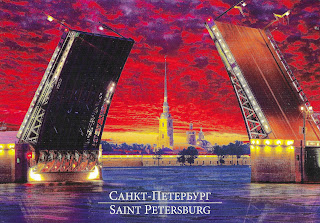Sent by Valeriia from Moscow Oblast, Russia.
The Trinity Cathedral (Russian: Троицкий собор, Troitsky sobor; Russian: Троице-Измайловский соборTroitse-Izmailovsky sobor), sometimes called the Troitsky Cathedral, in Saint Petersburg, Russia, is a formerly Russian Imperial Army Izmaylovskiy regiment Russian Orthodox church, an architectural landmark - a late example of the Empire style, built between 1828 and 1835 to a design by Vasily Stasov. It is located due south of the Admiralty on Izmaylovskiy Prospekt, not far from the Tekhnologichesky Institut Metro station.
The cathedral, which can accommodate up to 3,000 visitors, has only recently begun to be restored to its pre-Revolutionary splendor after years of neglect. In honor of the victory in the Russo-Turkish War, 1877–1878, when the Russians liberated Bulgaria from the Ottoman domination, a memorial column was constructed in front of the northern facade of the cathedral in 1886. The cathedral became a part of the Saint Petersburg World Heritage Site in 1990 (read more).








































